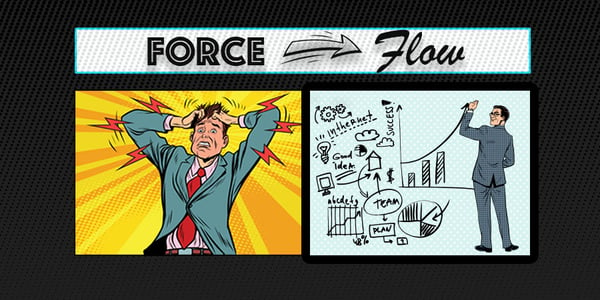Rapid Application Development (RAD) is to Agile what the Walkman CD Player is to MP3. Revolutionary for its time, fondly remembered, and the gateway to an explosion of innovation. Now, the audio file is ubiquitous and for every software project, there's Agile. So, how did we get here?
What's so rad about RAD?
The Waterfall method of development has roots in conventional engineering. It involves planned and sequential steps followed to completion. This linear progression has its place. But, in the case of application development, you'll likely have seen how it can - often, does - lead to projects running over time and budget.
Given the emerging fast-paced world of digital products in the early 90's, we needed a different approach. In 1991, James Martin of IT engineering fame published his titular book on the subject and coined the phrase, saying:
'Rapid Application Development (RAD) is a development lifecycle designed to give much faster development and higher-quality results than those achieved with the traditional lifecycle. It is designed to take the maximum advantage of powerful development software that has evolved recently.'
It's a process that focuses less on rigid plans and more on fast, iterative cycles of prototyping. It relies on new discoveries, tools and user feedback throughout.
These kinds of 'Agile ideas' were not new. Still, the emphasis on adaptive and incremental methods as applied to software development broke ground on popularizing this way of thinking.
The Stakeholder’s Guide to QA Testing
Discover how investing in QA early protects ROI, prevents costly rework, and leads to smoother launches and satisfied users.
4 phases of Rapid Application Development
Martin's RAD method is split into four phases:
- Requirement planning - Stakeholders meet to agree scope and constraints.
- User design - A continuous process where the user communicates their needs to the team. They interact with a working prototype to create, refine and test applications or features.
- Construction - A continuous process of programming and systems testing. Also reliant on user involvement and adjusted with new learnings.
- Cutover - The phase of testing, feature integration and user training.
These form the basis of our modern understanding of Agile (think also Kanban, Lean and Scrum), and have parallels with Design Thinking, more generally. And, you will recognize the underlying roots of today's Software Development Lifecycle for process and release management:
.png?width=800&name=Untitled%20(12).png)
How RAD became Agile - and why we never looked back
Adopters of RAD aimed for higher quality outcomes that met user needs, while avoiding the pitfalls of waterfall development. However, as much as the method centers on the user, this people-first approach failed to extend to the needs of development teams themselves. Why? It relied on a certain level of expert input and the big picture was likely to become lost in fragmented cycles of prototyping.
So, a group of engineers came together in the early 2000s and created the 'Agile Manifesto', which reached over 50 percent adoption between 2012-2015, under the promotion of the Agile Alliance.
Agile offers practical, specific ways of working, from stand-ups to sprint cycles. These ways of working align RAD's 'quick and dirty' prototyping principle with structural process management systems, split by feature and built into nested layers of user journeys. That way, you get visibility on progress, clear accountability for team members and you can shift priorities as needed.
What's next?
In 2021, 95 percent of organizations use some form of Agile. Yet it's becoming clear that technology is outdated almost the moment it reaches the market. Just as we reach mass adoption, do we need to take another hard look at our assumptions about good process management? How can automation enhance our capacities to build amazing software, fast?
For more content like this, check out our article on Waterfall vs. Agile.
White Paper: How OnPath Unlocked a Stalled Software Project
Learn how QA can do more than find bugs — read our white paper to learn how OnPath’s approach reduces stress, restores momentum, and protects ROI through strategic alignment and faster release cycles.





